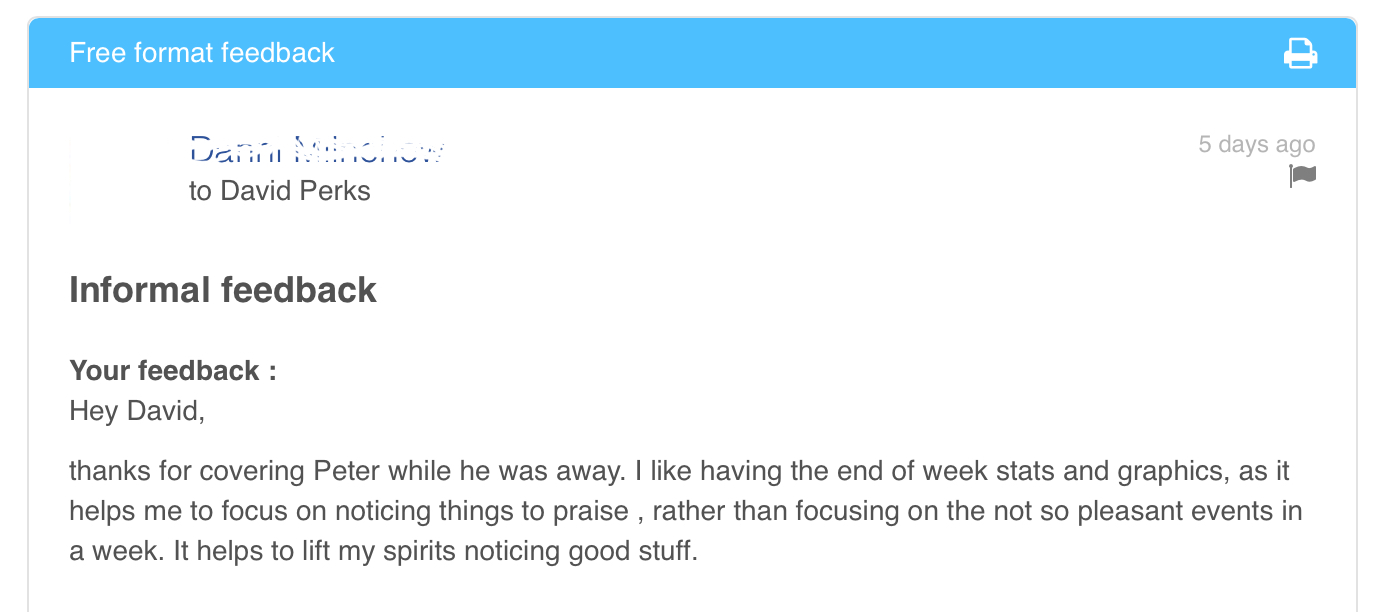 Check-in’s fail the memory test
Check-in’s fail the memory test
I’ve been testing a very simple theory to confirm something about check-in’s that many organisations seem blind to.
Whilst check-in’s can work for alignment, assessment and assistance, I’ve been observing that most are conducted in a way that doesn’t work for appreciation.
There are a few reasons for this
- Leaders intend to be appreciative, but get sidetracked by other topics, and forget,
- Leaders confuse a vague ‘thanks for doing that’ for meaningful appreciation,
- The dreaded sandwich effect where appreciation is wrapped in a bundle of critical assessment,
...... and this is the big one ......
4. When genuine appreciation is expressed, it doesn’t make it into notes of the conversation and so it’s quickly forgotten by the recipient.
How to fix this
The inspiration behind Pay Compliment began from a practice of handwriting thank you letters. As it turned out these provided enduring intrinsic motivation for the recipients over many years.
They were cherished.
I didn’t know it at the time, but I now know that re-reading them fired up the reward circuits in the brain that were formed when they were first recieved. An effect I’m calling the afterglow.
I experienced afterglow myself this week in a way that would not have been possible through a check-in conversation.

A customer sent me this appreciation message using the Pay Compliment platform. I’ve never met them, never had a conversation, and yet their words created meaning for me. I’ve re-read them many times since first recieving them, each time feeling an afterglow of motivation.
By simply keeping appreciation (and alignment, assessment and assistance) on the record, recall is greater, reflection is greater, and intrinsic reward is greater.
This is fundamental to the power of the Pay Compliment platform.
The evidence for your workplace
Could you be missing out on afterglow? You can recreate my test to find your own evidence.
Simply ask your leaders when they last appreciated each staff member, and how often they appreciate their people on average. Now ask the team members themselves when they were last appreciated, and how often on average they are appreciated.
The difference between the leader score and team member score is your appreciation effectiveness gap.
if your appreciation effectiveness gap is significant, we can help. The afterglow that you’re missing out on will more than pay for the monthly subscriptions.
Let us know your gap in the comments. We’d love to hear your findings.